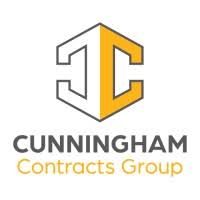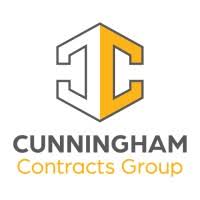Title Page
-
Site conducted
-
Conducted on
-
Prepared by
-
Location
1. SAFE ACCESS
-
1.1 Are all access routes / roadways level and in good condition?
-
1.2 Are all open edges adequately protected?
-
1.3 Are all openings at ground level adequately covered or fenced off?
-
1.4 Are all openings in floor slabs adequately covered or fenced off?
-
1.5 Is area tidy, and materials safely stacked?
-
1.6 Is artificial lighting available and adequate?
-
1.7 Are all elevated walkways fitted with handrails?
-
1.8 Are all signs visible, clean, and secure?
2. LADDER'S
-
2.1 Are ladders in good condition, free from defect?
-
2.2 Are ladders in use either tied at the top, or footed at the bottom?
-
2.3 Are ladders properly positioned for gaining safe access?
-
2.4 Do all ladders extend at least 1.05m above landing points?
3. EXCAVATIONS / GROUNDWORKS
-
3.1 Are excavator operators recording weekly inspections?
-
3.2 Are all deep excavations safe from collapse?
-
3.3 Are banksmen appointed to control lorry movements?
-
3.4 Are tipping areas level, and free from obstructions?
-
3.5 Are excavations which are open more than 7 days inspected weekly?
-
3.6 Is there safe access to excavations?
-
3.7 Is there a barrier to prevent persons falling in?
4. ROOF WORK
-
4.1 Is appropriate edge protection erected?
-
4.2 Is safe access to roof provided?
-
4.3 Confirm if safe system of work is in place, ie, safety nets, boarded platforms, access platforms, etc
5. PERSONAL PROTECTIVE EQUIPMENT
-
5.1 Are all operatives wearing head protection, reflective vests, and safety footwear?
-
5.2 Are safety glasses issued and being used when operating power saws?
-
5.3 Are appropriate gloves worn? (Eg, rubber gloves when working with concrete or mortar)?
-
5.4 Do operatives sign issue books for P.P.E.?
-
5.5 Are safety harnesses available for confined spaces or unprotected high level work?
-
5.6 Are safety harnesses, lanyards, and inertia reels checked by users?
6. FALSEWORK AND FORMWORK
-
6.1 Are props plumb and properly set out to design specification?
-
6.2 Are bases and ground conditions adequate for loads?
-
6.3 Are proper pins used in the props and are timbers in good condition?
-
6.4 Is falsework checked before concrete pours?
-
6.5 Is there safe access onto formwork?
-
6.6 Are all high level work platforms fitted with handrails (2No), and toe boards?
-
6.7 Are all removed shuttering panels, timbers, and falsework stacked safely and neatly with all nails removed / clenched?
7. ELECTRICITY AND OTHER SERVICES
-
7.1 Are there any signs of damage to apparatus, especially portable equipment?
-
7.2 Are there any signs of damage to outer casings of wires and cables?
-
7.3 Are all connections to power cables by proper plugs?
-
7.4 Are temporary cables safely located overhead or elsewhere to avoid damage?
-
7.5 Are overhead lines assessed for clearance by site traffic and appropriate barriers erected?
-
7.6 Are locations of underground cables known, marked, and protected where exposed due to excavation works?
-
7.7 Are other underground services, eg, gas, telecom, etc, identified and suitable precautions in place?
-
7.8 Are all power tools 110Volt?
8. CRANEAGE
-
8.1 Are all operators recording their weekly inspections?
-
8.2 Are cranes sited on hard, level standing?
-
8.3 Have all lifting operations been assessed?
-
8.4 Has a banksman been appointed?
-
8.5 Is there at least 900mm clearance between the back of the crane and any fixed object?
-
8.6 Are all lifting accessories such as chains and slings in good order, and have they been inspected within the last 6 months?
-
8.7 Are excavators approved for small lifts?
9. WORKING OVER OR ADJACENT TO WATER
-
9.1 Is life belt with life-line available during working hours?
-
9.2 Are buoyancy aids being worn by operatives when working beside or over water where there are no protective measures in place?
-
9.3 Is grab line available downstream?
-
9.4 Is floating debris contained?
10. SITE REGISTERS
-
10.1 Lifting equipment inc. excavators, teleporters, cranes
-
10.2 Scaffolding & working platforms
-
10.3 Work equipment
-
10.4 Excavations/ Cofferdams
11. OFFICES, CANTEEN, AND TOILETS
-
11.1 How many fire extinguishers are on site? * Detail how many of of each type and their locations
-
11.2 Are all fire extinguishers in good condition?
-
11.3 Have all fire extinguishers a label stating the date they were last checked, and is this within the last 12 months?
-
11.4 Are there adequate signs in place for location of fire extinguishers?
-
11.5 Are the escape routes in the offices kept clear and properly signed (escape plans are required for large office layouts)?
-
11.6 Is there a first aid kit in the site office?
-
11.7 Is the first aid kit adequately stocked and suitable for the numbers of site operatives?
-
11.8 Are the contents of the first aid box within their ‘use by’ date
-
11.9 Are statutory notices displayed ( AF1 ‘Notification of Project’, Employers Liability Insurance Certificate, Emergency Contact Notice, Health & Safety at Work – What you Should Know)
-
11.10 Are site toilets clean and free from water leaks?
-
11.11 Are site toilets stocked with toilet rolls, soap, and towels?
-
11.12 Is site canteen clean and tidy?
-
11.13 Are convector heaters situated away from sources of ignition (away from paper / cardboard)? Are they controlled by thermostats, switched off at night?
-
11.14 Are oil filled radiators free from leaks? Are they controlled by thermostats, switched off at night?
-
11.15 Are ‘smoke free’ signs displayed at entrances? (Note: To comply with anti-smoking regulations, signs must be displayed at entrances)
12. TRAFFIC MANAGEMENT
-
12.1 Are advanced road works signage in position?
-
12.2 Are signs properly secured and clean?
-
12.3 Are traffic cones in position and clean?
-
12.4 Are temporary traffic lights properly positioned when required?
-
12.5 Are public roads / footpaths in a clean condition?
13. HEALTH & SAFETY PLAN
-
13.1 Is the Health & Safety Plan up to date and available on site?
-
13.2 Are method statements up to date and in place for current activities?
-
13.3 Are risk assessments up to date and in place for current activities?
-
13.4 Have emergency procedures been devised & communicated?
14. SITE SAFETY SYSTEM
-
14.1 Are daily task talks taking place?
-
14.2 Are weekly safety review meetings taking place?
-
14.3 Are daily safety walkabouts taking place by Sub-contractors?
-
14.4 Are tool-box talks taking place?
-
14.5 Are all operatives and staff aware of the site rules?
15. STORAGE & HOUSEKEEPING OF FUELS, OILS, PAINTS, CHEMICALS and GAS
-
15.1 Are oils, paints, chemicals, and small containers of fuel stored in container?
-
15.2 Does bund of diesel bowser / tank need to be emptied? (Diesel to be drawn off, filtered, and re-used) – self bunded bowsers / tanks only
-
15.3 Is drip tray available for use when re-fuelling plant? (Note: Plant nappies available as drip trays)
-
15.4 Is spill kit adequate?
-
15.5 Is fuel hose sound and free from defects?
-
15.6 Does cabinet for fuel hose and rotary pump have a locking facility?
-
15.7 Have bunds constructed of blockwork been tested for leaks?
-
15.8 Are gas bottles stored upright, in a well ventilated secure location?
-
15.9 Are gas bottles either secured in purpose made trolley, crate, or chained against a fixed object?
-
15.10 Are all gas hoses in good condition and flash back arrestors fitted to bottles in use?
16. MANAGEMENT OF WASTES
-
16.1 Is waste skip sited in compound and away from watercourse?
-
16.2 Are operatives using the skip for controlled waste?
-
16.3 Do skip need to be emptied?
-
16.4 Are special wastes stored in covered watertight container? (ie. oil contaminants, empty oil containers, grease cartridges, unused chemicals. Paint containers to be removed by painting sub-contractor.)
-
16.5 Are operatives observing the “keep site tidy” rules?
-
16.6 Are Waste Carrier’s licenses on file? Sub-contractors hauling waste material off site must supply a copy of their license.
-
16.7 Are Consignment Notes on file for “Hazardous Waste / Special Waste” hauled off site?
-
16.8 Are copies of conveyance notes held on file for Controlled Waste?
-
16.9 Are copies of Waste Transfer Notes on file for waste that has gone off site?
17. WASHING OUT CONCRETE DELIVERY TRUCKS
-
17.1 Is there a designated wash out area?
-
17.2 Does wash out area need to be cleaned out?
-
17.3 Are there signs of cement washout adjacent to watercourse or drainage gulley?
-
17.4 Are operatives aware of the rule not to wash out concrete trucks beside a watercourse or drainage gulley?
18. CONTROL OF SILT AND MUD
-
18.1 Are drainage channels and gulleys free of silt / mud?
-
18.2 Is carriageway free of silt / mud?
-
18.3 Is footpath free of silt / mud?
-
18.4 Is settlement chamber / lagoon operating successfully?
-
18.5 Does settlement chamber / lagoon need to be cleaned out?
19. SPILLAGE RESPONSE
-
19.1 Are spillage kits maintained on site?
-
19.2 Are oil / fuel contaminated spill kits being disposed of as special / hazardous waste?
-
19.3 Has spillage of fuel / oil / chemicals / paint occurred?
-
19.4 If spillage has occurred, has the Environmental Manager and Insurance Department been informed?
20. WORKING ON A CONTAMINATED SITE
-
20.1 Has the contaminated zone been fenced off and appropriate signage displayed?
-
20.2 Have all operatives and staff been informed about contaminated zone at site induction?
-
20.3 Have precautions been put in place to prevent further pollution / contamination from rain water run-off?
AUDIT COMPLETE
-
Add signature








